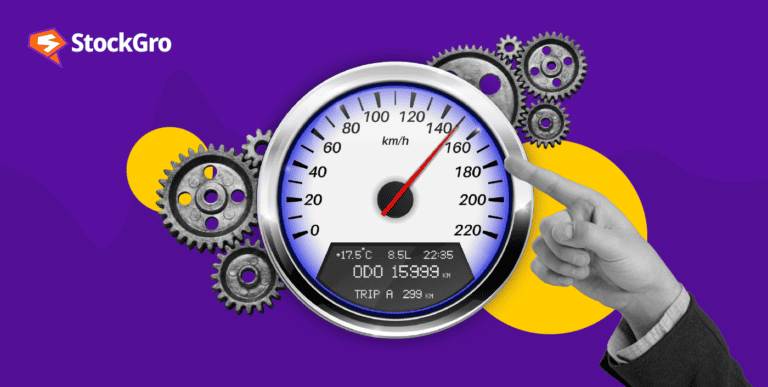
Options trading holds a variety of strategies, one of which is the iron butterfly. It might take some effort to grasp, but with basic understanding and practice, it becomes straightforward to use. Let’s delve into the essentials of the iron butterfly option strategy.
What is an iron butterfly?
Iron Butterfly a.k.a iron fly is a smart way to aim for steady earnings while keeping risks and profits under a check. This method is a part of “wingspreads” option strategies, named after flying creatures like butterfly or condor due to their structure.
In this, a bear call spread joins with a bull put spread, both having the same expiration date, meeting at a middle strike price. At this middle price, a short call and put are sold, forming the “body”, and a call and put are bought above and below this price, forming the “wings.”
You may also like: What is the strangle option strategy?
Distinguishing Features:
- Unlike a basic butterfly spread, Iron Butterfly is a credit spread, which means you get a net premium when you open, while basic butterfly is a debit spread.
- Here, four contracts are required unlike three in a basic butterfly spread.
Example of iron butterfly strategy
Let’s assume, for instance, that XYZ Pvt. Ltd. stock rallies to Rs. 3500 in August. A trader looking to employ the Iron Butterfly strategy writes a September Rs. 3500 call and put, receiving a Rs. 300 premium for each contract.
Additionally, the trader buys a September Rs. 3600 call and a September Rs. 3400 put for Rs. 75 each. The outcome is an immediate Rs. 6500 credit post deducting the cost of the long positions from the premium obtained for the short ones (Rs. 8000 – Rs. 1500).
Here’s the breakdown of the example:
Premium received for short call and put = Rs. 300 x 2 x 100 shares = Rs. 8000
Premium paid for long call and put = Rs. 75 x 2 x 100 shares = Rs. 1500
Rs. 8000 – Rs. 1500 = Rs. 6500 initial net premium credit
Infographic: Example Breakdown Table
| Action | Contract | Strike Price (Rs.) | Premium Received/Paid (Rs.) | Total Cost/Benefit (Rs.) |
| Write | Call | 3500 | 300 | +8000 |
| Write | Put | 3500 | 300 | |
| Buy | Call | 3600 | 75 | -1500 |
| Buy | Put | 3400 | 75 | |
| Total | +6500 |
Also Read: Iron condor – The options trading strategy
How to use the iron butterfly strategy?
The Iron Butterfly strategy helps in limiting both potential gains and losses. This strategy is crafted to ensure traders retain some of the initial premium paid. This occurs when the price of the concerned security or index settles between the higher and lower strike prices.
Traders opt for this strategy during less volatile market phases, anticipating the security will remain within a specified price range till the options expire.
Profit increases as the closing price nears the middle strike price at expiration. Losses are faced if the price closes above the higher call’s strike price or below the lower put’s strike price. The breakeven points are found by adding or subtracting the received premium from the middle strike price.
For instance,
Middle strike price = ₹5000
Net premium paid at the start = ₹6500
Upper breakeven point = ₹5000 + ₹650 (x 100 shares = ₹6500) = ₹5650
Lower breakeven point = ₹5000 – ₹650 (x 100 shares = ₹6500) = ₹4350
Losing scenario
If the price goes above or below certain points, the trader will spend more to buy back the short call or put than what they got at first, leading to a net loss.
Suppose XYZ Company closes at ₹7500 in November. All the options in the spread will expire worthless except for the call options.
The trader has to buy back the short ₹5000 call for ₹250,000 (₹7500 market price – ₹5000 strike price x 100 shares) to close the position and gets a premium of ₹150,000 on the ₹6000 call (₹7500 market price – ₹6000 strike price = ₹1500 x 100 shares).
The net loss on the calls is ₹100,000, which is then subtracted from the initial net premium of ₹65,000 for a final net loss of ₹35,000.
It’s not mandatory for the upper and lower strike prices to be equally distant from the middle strike price. Iron butterflies can be made with a tilt in one direction or the other, where the trader thinks the asset price will rise or fall a bit but only to a certain point.
If the trader thinks XYZ Company will rise to ₹6000 by expiration, they can adjust the upper call or lower put strike prices accordingly.
Iron butterflies can also be flipped so that long positions are at the middle strike price while short positions are at the edges. This can be done profitably during times of high changes in the underlying instrument’s price.
Also Read: How to trade in options and maximise your profit?
Pros of iron butterfly option strategy
- Small capital requirement: Can be initiated with a relatively low amount of capital.
- Steady income: Helps in generating a steady income.
- Lower risk: Lesser risk as compared to directional spreads.
- Adjustability: Can be rolled up or down based on price movements.
- Defined risk and reward: Clear parameters for risk and reward; the initial net premium is the maximum possible profit, while the calculated loss from the calls or puts minus the initial premium is the maximum possible loss.
Cons of iron butterfly option strategy:
- Commission costs: Higher commission costs due to the opening and closing of four positions.
- Rare maximum profit: Achieving the maximum profit is seldom as prices usually settle between the selected price ranges.
- Higher loss chances: Proportionately higher chances of loss due to the narrow spreads used.
- Skill and financial requirements: Brokerages may require certain skill levels and financial conditions to be met for employing this strategy.
Pros and Cons of Iron Butterfly Option Strategy
| Advantages | Disadvantages |
| Small capital requirement | Higher commission costs |
| Steady income | Rare maximum profit |
| Lower risk | Higher chances of loss |
| Adjustability | Skill and financial requirements |
| Defined risk and reward |
Conclusion
Iron butterflies help in earning regular income while keeping risk low. This strategy should only be used after fully grasping the risks and benefits.
Most trading platforms need users to have certain expertise and financial standing to use this or similar strategies.

